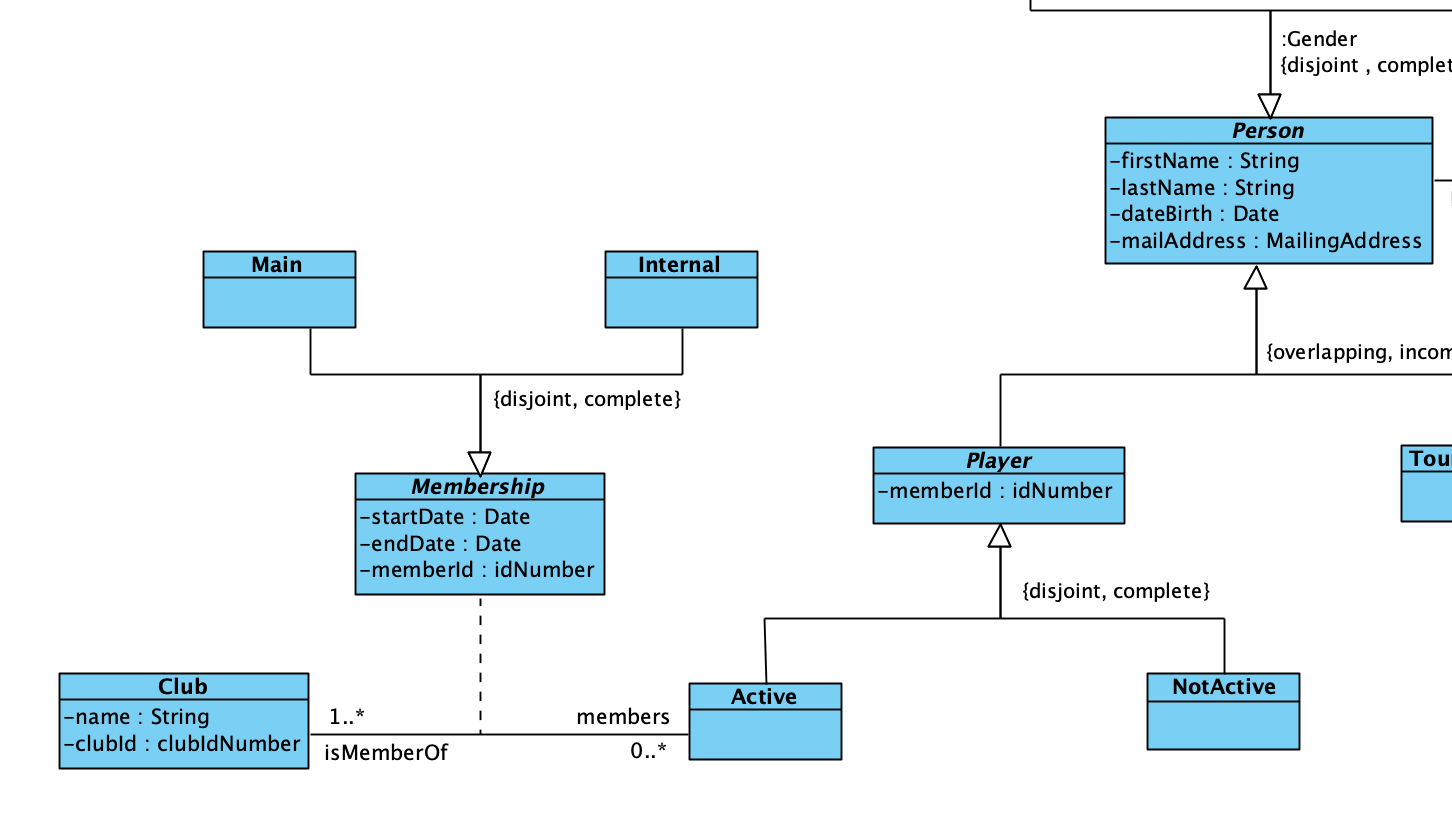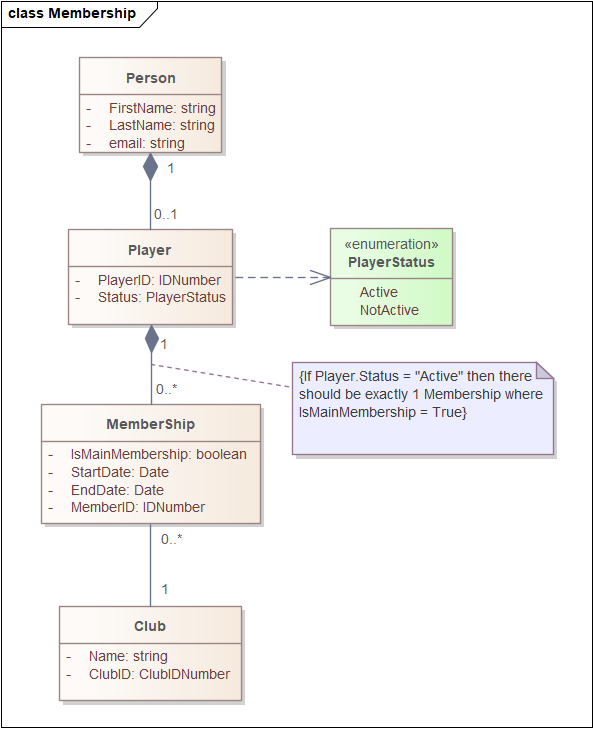So I need to model the situation where we have a collection of people who are members of a federation. You can either be an active member or an inactive member of the federation. If you're inactive, you're not a member of any club. If you're an active member, you are a main member to exactly one club and can have any number of clubs that you're an internal member of.
My current UML model does not enforce that every active player should have exactly one main membership so I'm wondering how I can fix this. I personally think that I can solve this by drawing a regular association between 'Main' and 'Active' but I don't really know if this is allowed or if there are any other solutions to my problem.


InternalorMainseems more like a property of Membership than really a subclass. Just like 'Active' or 'Not Active' should probably not be separate subclasses of Player; but more like values of a status (of the same player) – Cirrus